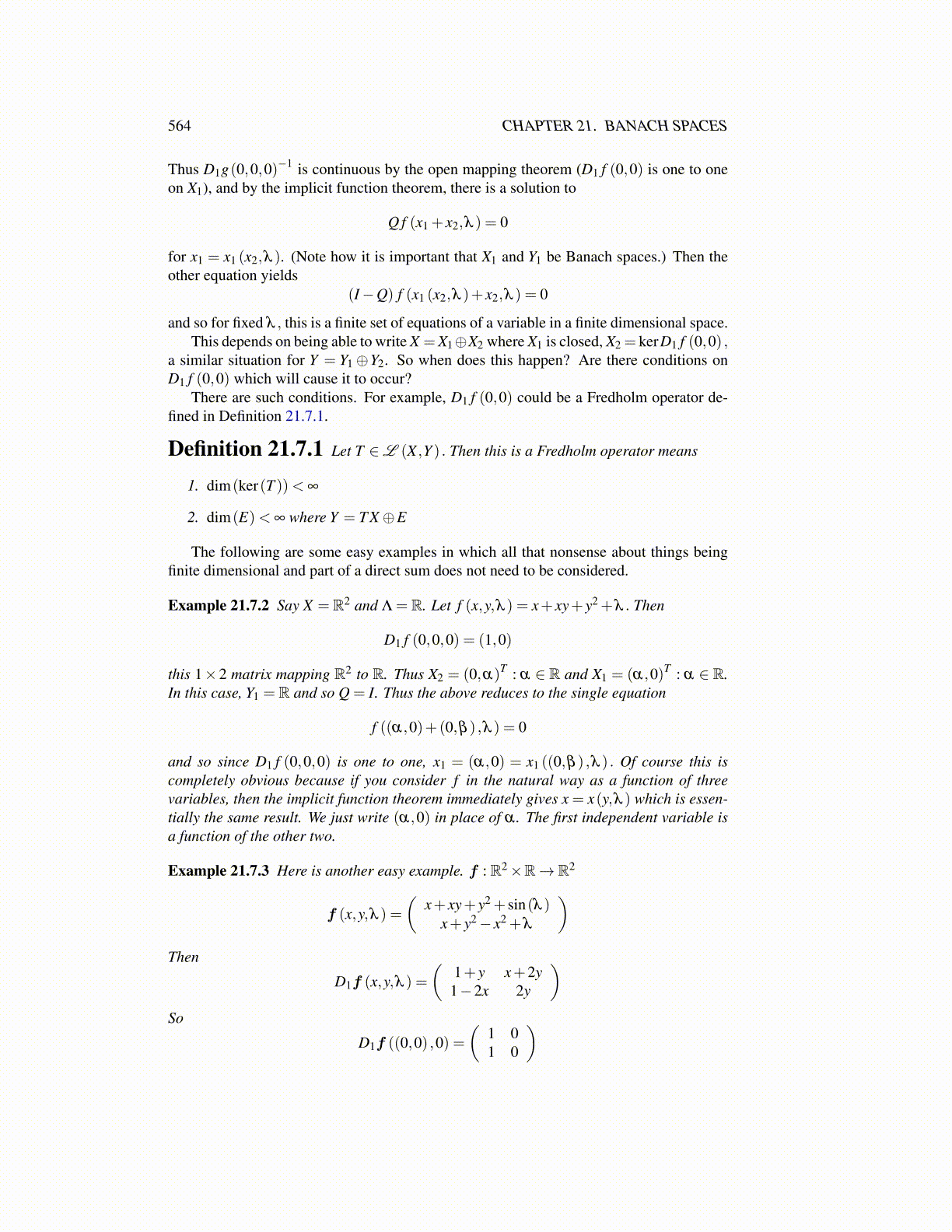
564 CHAPTER 21. BANACH SPACES
Thus D1g(0,0,0)−1 is continuous by the open mapping theorem (D1 f (0,0) is one to oneon X1), and by the implicit function theorem, there is a solution to
Q f (x1 + x2,λ ) = 0
for x1 = x1 (x2,λ ). (Note how it is important that X1 and Y1 be Banach spaces.) Then theother equation yields
(I−Q) f (x1 (x2,λ )+ x2,λ ) = 0
and so for fixed λ , this is a finite set of equations of a variable in a finite dimensional space.This depends on being able to write X =X1⊕X2 where X1 is closed, X2 = kerD1 f (0,0) ,
a similar situation for Y = Y1⊕Y2. So when does this happen? Are there conditions onD1 f (0,0) which will cause it to occur?
There are such conditions. For example, D1 f (0,0) could be a Fredholm operator de-fined in Definition 21.7.1.
Definition 21.7.1 Let T ∈L (X ,Y ) . Then this is a Fredholm operator means
1. dim(ker(T ))< ∞
2. dim(E)< ∞ where Y = T X⊕E
The following are some easy examples in which all that nonsense about things beingfinite dimensional and part of a direct sum does not need to be considered.
Example 21.7.2 Say X = R2 and Λ = R. Let f (x,y,λ ) = x+ xy+ y2 +λ . Then
D1 f (0,0,0) = (1,0)
this 1×2 matrix mapping R2 to R. Thus X2 = (0,α)T : α ∈ R and X1 = (α,0)T : α ∈ R.In this case, Y1 = R and so Q = I. Thus the above reduces to the single equation
f ((α,0)+(0,β ) ,λ ) = 0
and so since D1 f (0,0,0) is one to one, x1 = (α,0) = x1 ((0,β ) ,λ ) . Of course this iscompletely obvious because if you consider f in the natural way as a function of threevariables, then the implicit function theorem immediately gives x = x(y,λ ) which is essen-tially the same result. We just write (α,0) in place of α . The first independent variable isa function of the other two.
Example 21.7.3 Here is another easy example. f : R2×R→ R2
f (x,y,λ ) =(
x+ xy+ y2 + sin(λ )x+ y2− x2 +λ
)Then
D1f (x,y,λ ) =(
1+ y x+2y1−2x 2y
)So
D1f ((0,0) ,0) =(
1 01 0
)